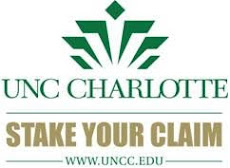By
Zhongjie Lin
Under the
current massive urbanization in China that has been regarded as the largest mass migration ever seen in human history, the Chinese government has
taken bold steps to build hundreds of new cities to accommodate the swelling
urban population and sustain economic development.
These top-down
governmental initiatives represent a wholesale introduction of emerging ideas
of planning and cutting-edge building technologies to address social and
environmental issues during a period of unprecedented economic growth.
China’s national development agenda has a
goal of 60 percent urbanization by 2030, which means that each year about 16
million rural inhabitants are moving into cities. In 1985,
less than 20 percent of Chinese people were urban residents. Since then, the
urban population has grown at a rate of about 1 percent each
year and exceeded 50 percent of the national population in
2011.
I have studied
China’s massive urbanization and emerging new towns since 2011. This project
falls within one of the research themes of the Woodrow Wilson International Center
of Scholars, namely “urbanization, migration and immigration.” I received a
Wilson Center fellowship to conduct research in Washington, D.C. from November
2012 through May 2013 and am currently the only scholar of architecture and
urban design at the center.
The Wilson
Center is dedicated to fostering international relations to inform
policy-making and to seeking solutions for significant global issues in
political and social spheres. Fellows from different regions and academic backgrounds
gather here. Although each focuses on an individual topic of international
studies, the center provides great resources and opportunities for scholars to
develop and share their work through symposia, talks and other public events. Fellows
also make weekly work-in-process presentations that serve as productive opportunities
to provide updates on their research, receive feedback and discuss common
interests.
My presentation
of China’s ongoing new town movement drew a lot of interest among scholars in
Chinese urbanism, as it addresses several issues equally important to other
regions in the world, including environmental challenges to human habitats, infrastructure
for rapidly expanding cities and the economic and political implications of
China’s growing urban society. The experience at the center has continued to
broaden my perspective of the research project, which will help me in developing
a book manuscript on China’s new town movement.
The Chinese government has announced it will
build 20 new cities each year for 20 years.
At least 400 new cities are expected to emerge by 2030. Whether and to what extent these new towns can succeed, however, is
still to be seen. They face both technical challenges and, more importantly,
barriers existing in China’s current socio-economic system, such as land and
energy policies.
In any case, the
rise of hundreds of new towns in the next decade will be a significant
phenomenon to observe in China and will surely influence the rest of the world.
# # #
Zhongjie Lin is an associate professor of architecture in the College of Arts + Architecture



